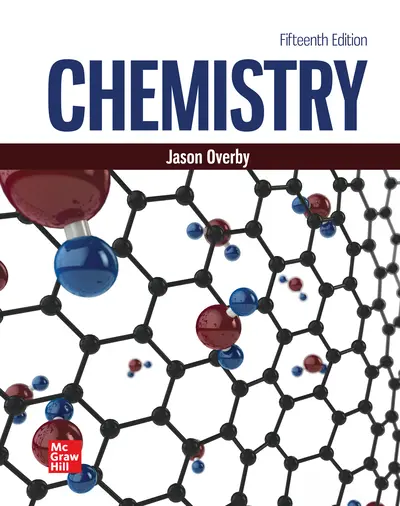My Account Details

ISBN10: 1264926766 | ISBN13: 9781264926763

* The estimated amount of time this product will be on the market is based on a number of factors, including faculty input to instructional design and the prior revision cycle and updates to academic research-which typically results in a revision cycle ranging from every two to four years for this product. Pricing subject to change at any time.
Instructor Information
Quick Actions (Only for Validated Instructor Accounts):
Chemistry continues a long-standing tradition of providing a firm foundation in the concepts of chemical principles while instilling an appreciation for the important role chemistry plays in our daily lives. This text provides a balance of theory and application, while illustrating the principles with applicable examples. With this release, no longer will students be confused about which particular chemical value to employ in a calculation when using ALEKS. The data between the print text, eBook, and ALEKS are now parallel with one another. Numerous tables, figures, and problems throughout the text have been updated to mirror the data in ALEKS, thereby presenting unified chemical data.
Chapter 2: Atoms, Ions, and Molecules
Chapter 3: Mass Relationships in Chemical Reactions
Chapter 4: Reactions in Aqueous Solutions
Chapter 5: Gases
Chapter 6: Thermochemistry
Chapter 7: Quantum Theory and the Electronic Structure of Atoms
Chapter 8: Periodic Relationships Among the Elements
Chapter 9: Compounds and Bonding
Chapter 10: Structure and Bonding Theories
Chapter 11: Intermolecular Forces and Liquids and Solids
Chapter 12: Physical Properties of Solutions
Chapter 13: Chemical Kinetics
Chapter 14: Chemical Equilibrium
Chapter 15: Acids and Bases
Chapter 16: Acid-Base Equilibria and Solubility Equilibria
Chapter 17: Entropy, Gibbs Energy, and Equilibrium
Chapter 18: Electrochemistry
Chapter 19: Nuclear Chemistry
Chapter 20: Chemistry in the Atmosphere
Chapter 21: Metallurgy and the Chemistry of Metals
Chapter 22: Nonmetallic Elements and Their Compounds
Chapter 23: Coordination Chemistry
Chapter 24: Organic Chemistry
Chapter 25: Synthetic and Natural Organic Polymers
Periodic Table
Appendix 1: Units for the Gas Constant
Appendix 2: Thermodynamic Data at 1 atm and 25°C
Appendix 3: Dissociation Constants for Weak Acids and Bases at 25°C
Appendix 4: Solubility Product Constants at 25°C
Appendix 5: Mathematical Operations
Appendix 6: Fundamental Constants, Useful Conversion Factors, and SIPrefixes
Appendix 7: Color Codes for Molecular Models
Need support? We're here to help - Get real-world support and resources every step of the way.